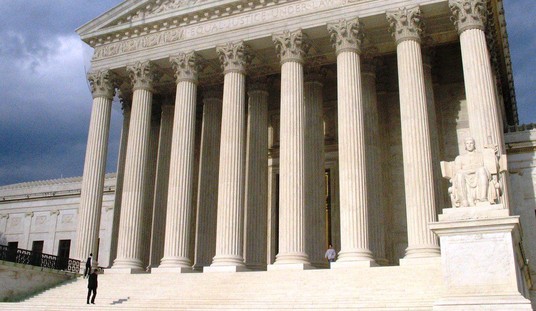Last year I started reporting on the NY SAFE Act, trying to highlight the way this law ruins lives. The NY SAFE Act, among other things, has provisions in it which would make people disqualified from firearm ownership should they seek mental health help. While the nuance to how one becomes flagged by New York, and subsequently the NICS system, goes beyond “just seeking help,” it can be that easy. In my past conversations with Sandra “Sandy” Richardson from part 1 and Isaac Richey from part 2, they both – as well as many others I’ve spoke to on this topic – said that the NY SAFE Act Mental Hygiene Law (MHL) 9.46 creates serious barriers to people getting care.
When we’re dealing with any system in society where seeking help might land individuals on “a list,” there’s going to be fallout because of that. The prevailing and factual thought with people is “if I seek care, I will lose my rights.” While it hasn’t always been that way, in some jurisdictions it is now.
Richardson has conducted extensive amounts of research on this topic. After the State of New York’s law left the retired medical professional scorned, she went on the offense. Richardson, unlike Richey, was notified that she ended up on the disqualified list because she possessed a New York firearms permit, and was immediately able to ameliorate her situation through the courts, but that’s not par for course.
What has Richardson done with her research? She’s written an extensive and comprehensive paper that’s in preprint currently. The paper, “Codified Barriers to Mental Health Care, an Example from New York State,” speaks specifically to New York. While this is centered on New York’s policy, the chilling effects such laws have on people can be universally seen. Ricahrdson’s introduction highlights the foundational issues being discussed:
A barrier to care is something that prevents people from receiving adequate health care. Some common examples of barriers to adequate health care include availability of providers, cost, stigma, poor health literacy, and policy. Something that is codified is written into law. Familiar examples of things codified are traffic rules, banking rules, tax rules, and civil rights. Three examples of codified barriers to mental health care include
New York (NY) Secure Ammunition and Firearms Enforcement (SAFE) Act Mental Hygiene Law (MHL) § 9.46 reporting, National Instant Criminal Background Check System (NICS) mental health reporting by states to the Federal government, and red flag laws. Here, publicly available data and a current law are used to illustrate 1) the magnitude of the barrier to mental health care created by that law and 2) the percentage of the target population captured by that same law. These results will contribute to the understanding of whether such laws support population wellbeing.
I turned to a trusted source on the topic, Dr. Gianni Pirelli. Pirelli is an expert in this field and operates his own practice, Pirelli Clinical and Forensic Psychology, LLC, in Verona, NJ. Pirelli has written extensively on these topics and has an impressive bibliography under his belt. One source of information Pirelli directed me to when I reached out to him, is a chapter he co-wrote in the book “Advances in Psychology and Law Volume 5.” The chapter “The Emerging Role of Psychology in Shaping Gun Policy in the United States,” by Pirelli, Kathryn Schrantz, & Hayley Wechsler, takes a dive into policies and their findings need to be more widely accepted by said policy makers. Rather than play politics, lawmakers in the U.S. could benefit from work like Pirelli’s.
One of the strongest takeaways from reading the chapter was that there has yet to be any direct correlation between “serious mental illness” and acts of violence. One of the studies cited “found that those diagnosed with mental illness were no more likely to engage in violence due to their access to firearms than their counterparts without such diagnoses, even during high-risk periods, such as a hospitalization.”
That’s not to diminish the possibility, however, through the statistics that Pirelli, et.al. have uncovered a telling story. That story takes several narratives and up ends them, “3–5% of all acts of interpersonal violence are attributable to even severe mental illness (e.g., Schizophrenia, Bipolar Disorder; Gold & Simon, 2016).”
The New York SAFE Act was implemented in the dead of night, under cloak and dagger, in the wake of the Sandy Hook Elementary School shooting. Such high profile shootings are devastating to the victims, their families, and their communities, but they are not commonplace.
Some of the most notorious shootings (e.g., Columbine,Sandy Hook, Virginia Tech, the Colorado movie theater, Florida’s Pulse nightclub,and the Las Vegas concert) involved a perpetrator using firearms with large capacity magazines (Barry, McGinty, Vernick, & Webster, 2013) and, in some cases, the perpetrators had diagnosed mental health problems (Jenson, 2007). The level of media coverage on issues related to mental health and firearms can lead to the faulty public perception that mass shootings perpetuated by mentally ill people with high capacity magazines are commonplace. To the contrary, such is relatively rare and far from the most common forms of “gun violence,”
The body of work really points to both sides of the isle perhaps looking in the wrong place for causal factors to interpersonal violence and murder. The study of suicide mitigation and those efforts, surly mental health plays a role, as suicidal ideations and thoughts fall squarely within the mental health arena. Whether or not someone dies by suicide by firearm is only consequential in the mechanics of firearms, and whether or not a “pause” can be caused – a way to allow someone to think about not commiting a final act to temporary problems.
Such “reporting” laws, like NY SAFE Act Mental Hygiene Law (MHL) 9.46, Pirelli makes the following notation:
Concerns related to increased stigmatization are likely to reverberate further—in the form of patients limiting their disclosures and deterring people from seeking mental health treatment. It is not necessary to speculate much about the likely effects, as they have been witnessed in the law enforcement and military communities.
Through data that she obtained that’s publically available and that she received through Freedom of Information Act requests, Richardson compared the statistics concerning the number of MHL § 9.46 reports filed over a period of time with the percentages she found of those who would not seek mental health help due to such a law and noted:
The ratios of individuals less likely to seek mental health care to the number of DCJS database searches show that this reporting while potentially benefiting a smaller number, is increasing the risk of harm to hundreds of thousands of people every year. Simply put, MHL § 9.46 reporting has created a large barrier to mental health care.
…
The ratio for gun owners shows that for every 1 DCJS database search there are 16 guns owners who are less likely to seek mental health care due to this law. However, this is likely an underestimate because the 9% estimate used in the calculation was based on a study of both gun owners and non-gun owners already seeking mental health care. In addition, this law is written to target legal gun ownership which may make gun owners far more reluctant to seek care.
Richardson draws a staggering statistic that needs to be repeated to policy makers across the U.S. Whether laws and policies like the NY SAFE Act were put in place for altruistic purposes or simply to punish gun owners and Second Amendment supporters is of no consequence in this light. The law should not cause and create more damage, and that has to be an unintended consequence to the measure – we can hope unintended. Richardson concludes with:
These results illustrate that NYS SAFE Act MHL § 9.46 reporting captures a very small percentage of its target population and is a large barrier to mental health care. It is within reason to extrapolate these results to NICS mental health reporting and red flag reporting as well. Removing these codified barriers to mental health care may be in the interest of population wellbeing.
Recalling my conversations with Isaac Richey from part 2, we do have the following anecdotal evidence that corroborates the statistics Richardson has found:
Here’s what a few other guardians of the United States had to say about seeking mental health help:
“I would avoid it because the government likes to punish people who want to better themselves.” – Cole.
“If I knew my gun rights would be taken away, no, I would not.” – Ryan
“If I knew about what happened to you and I knew that I would not be able to purchase a firearm for seeking help, even if it was voluntary, as much as I would need the help, I wouldn’t want my rights taken away.” – John, a veteran who suffers from PTSD from having engaged in “intense combat”
A consensus needs to be formed and it might have to not include the politicians at the start. Until the people such laws affect, in every facet of the conversation, can come to a broader understanding that such policies hinder society from seeking wellness, we’re going to be dealing with more injustices. Once every camp sees that these policies need to go, that mental health help shouldn’t be stigmatized nor people be punished for doing the right thing, and that we need to come up with policies that attack the causal factors; then the politicians must be made to see the same – and act accordingly.
People like Sandra “Sandy” Richardson and Isaac Richey are victims of a “we know better than you” mentality. They were both stripped of their rights without due process. Richardson was luckily able to regain her rights. Richey, sadly, has been forced to take legal action because he cannot get any relief administratively because the bureaucracy in New York just won’t allow it. New York has created energized persons who are not fighting to mitigate the chances of the same thing happening to others.
While people across the nation suffer with and have to deal with mental health related issues, politicians in states like New York and New Jersey created a breeding ground for disasters. People not seeking help because of the laws they implemented is morally repugnant. The social end of things need to be brought up to speed, even though the constitutionality of these laws are being called into question, as they should.
In part 4 of this series, I’ll be exploring exactly that, whether or not the NY SAFE Act and laws like it are constitutional. Spoiler alert, we already know the answer, but we shall dive in regardless.
Please take some time and check out the former parts of this series…
NY SAFE Act chronicles part 1: Meet victim Sandy and the storm created








Join the conversation as a VIP Member